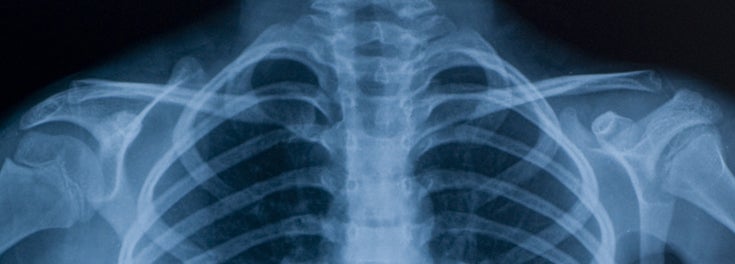
Jennifer Daniels had two passions as a high school student: science and medicine. The science side of her loved figuring out how things work. The medicine side researched diseases. Thanks to the University of Rhode Island, she’s able to combine both fields in a growing and newly accredited program that combines a bachelor of science in physics with a master of science in medical physics.
Undergraduates, all studying physics, apply to the program in their junior year, and, if accepted, take medical physics courses for two more years. After they finish, they complete a two-year residency and, ultimately, seek board certification.
High school students looking at colleges take note: “Students who enjoy science and math and want to apply their talents to the medical field have an opportunity to go from high school seniors to a residency in medical physics in only five years,’’ says URI Physics Professor Leonard Kahn. “Our program offers a unique blend of theory and practice, giving students a tremendous opportunity to succeed in this demanding profession.’’
What exactly is medical physics and, just as important, why pursue the field? The short answer is that medical physics is the application of physics concepts to medicine. The profession is booming as health care technology becomes more complex, requiring highly skilled scientists. Medical physicists work in medical imaging, radiation therapy and nuclear medicine, often treating people with cancer and heart disease. They help devise care plans for patients and ensure that medical imaging equipment is working properly.
Launched in 2011, the URI program recently won accreditation from the Commission on Accreditation of Medical Physics Education Programs, becoming one of only two accredited medical physics programs in New England. That honor reflects the hard work of URI physics professors Yana Reshetnyak and her husband, Oleg Andreev, world-famous scientists who discovered a technology that can detect cancerous tumors.
In fact, Daniels says her admiration for the professors is a big reason she chose medical physics. “They’re doing cutting-edge work, and it’s great to be part of that,’’ she says.
“We’re proud at URI to offer one of the best programs in New England,’’ says Professor Reshetnyak. “Medical physics is a very attractive profession for young bright students who enjoy physics and medicine.’’
Daniels studied physics as a URI undergraduate. In addition to a master’s in medical physics, she’s also pursuing her doctorate in biophysics, focusing on cancer therapy. She says one of the rewarding things about earning her master’s is taking classes in the radiation oncology department at Rhode Island Hospital, a partner in the program. The practical hands-on experience is invaluable.
“It’s been great to learn from people who are actually doing the work,’’ she says. “I get to see physics applied in a clinical setting. Physics is part of our daily life, even in medicine.’’
Her goal is to obtain her medical physics degree this spring, and her doctorate a year later. For a young scientist with two advanced degrees, the job possibilities are immense: a hospital, lab, university or private company.
“It’s so exciting to think of my career options for the future,’’ she says. “URI has given me this great opportunity, and I’m grateful.’’
